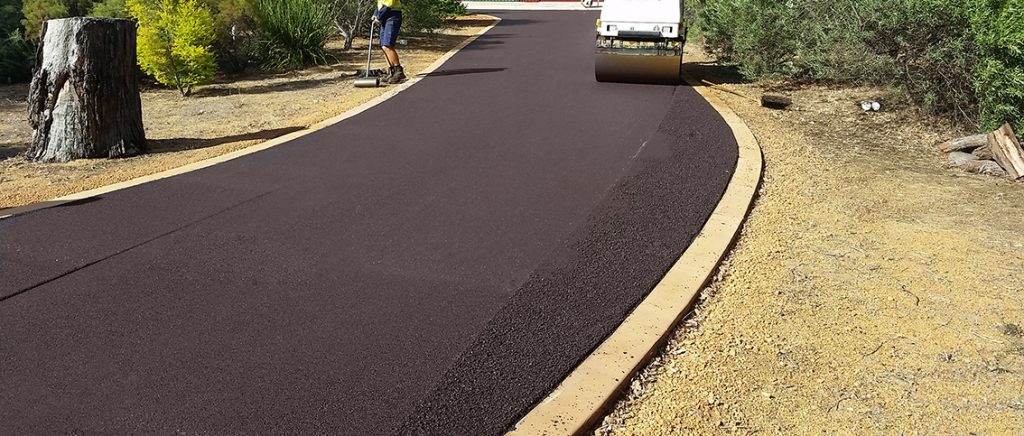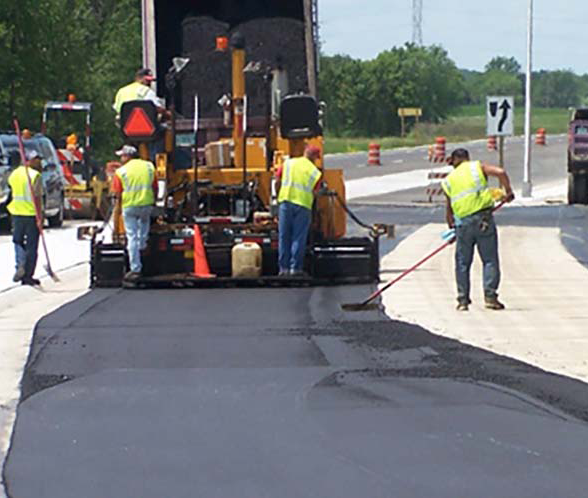Hot Mix Asphalt Paving: Redefining Commercial Property Landscapes
Hot Mix Asphalt Paving: Redefining Commercial Property Landscapes
Blog Article
Opening the Keys of Warm Mix Asphalt Modern Technology
Checking out the midsts of warm mix asphalt modern technology reveals a globe where thorough processes and accurate formulations converge to shape our roadways and framework. The blend of fillers, accumulations, and binders isn't merely a construction task but a strategic orchestration of durability and efficiency. As we peer right into the elaborate dance of components, a tapestry of resilience and sustainability unravels. What exists underneath this surface of asphaltic proficiency, and what tricks wait to be revealed in the realm of leading advancements?
Importance of Warm Mix Asphalt
Warm Mix Asphalt plays a crucial role in contemporary facilities advancement due to its toughness and cost-effectiveness. As the most generally used paving product for roads, highways, and auto parking whole lots, Warm Mix Asphalt supplies an array of advantages that add to its relevance in building and construction tasks.
The durability of Hot Mix Asphalt stems from its composition, which includes accumulations, binder, and filler products that are meticulously picked and blended to satisfy particular performance requirements. This accurate combination results in a adaptable and solid pavement that can endure regular use without significant damage. In Addition, Warm Mix Asphalt is 100% recyclable, additional enhancing its sustainability and environmental benefits. On the whole, the value of Hot Mix Asphalt in infrastructure growth can not be underrated, as it continues to be a cornerstone of modern construction techniques.
Components of Asphalt Mixes
The make-up of asphalt mixes contains thoroughly selected accumulations, binder, and filler materials that are essential for attaining specific efficiency requirements. Aggregates are the key element of asphalt blends, giving stamina and security. These aggregates can be natural, such as crushed rock or crushed stone, or artificial, like recycled materials from old pavements. The binder, commonly asphalt or asphalt cement, holds the accumulations together and gives flexibility and longevity to the mix. The selection of the binder is vital as it directly influences the mix's efficiency in different climate condition. Fillers, such as moisturized lime or Portland cement, are utilized to boost the mix's workability and aging resistance. Angled Parking.
The mix and percentage of these parts play a significant role in identifying the high quality and efficiency of the asphalt mix. Designers carefully design the mix to fulfill particular needs, considering aspects like website traffic volume, environment conditions, and pavement lifespan. Proper selection and harmonizing of accumulations, binder, and fillers are important for producing long lasting, resilient asphalt pavements.
Mixing and Production Strategies

When the aggregates are chosen, the binder, often asphalt cement, is added to bind the materials together. The binder's quality and quantity significantly impact the mix's strength, resistance, and flexibility to ecological aspects. Furthermore, fillers like hydrated lime or Portland cement may be integrated to enhance specific characteristics of the asphalt mix, such as its workability or dampness resistance.
Throughout manufacturing, the aggregates and binder are heated, typically in between 250-325 ° F(121-163 ° C ), to assist in blending and make certain appropriate finishing of the aggregates. The blending procedure should be comprehensive to achieve an uniform mix that promotes the wanted efficiency qualities of the asphalt. Different methods, such as set mixing or drum blending, are used to accomplish constant and premium asphalt blends for building projects.
Aspects Affecting Asphalt Efficiency
Elements affecting asphalt performance incorporate an array of variables that affect the resilience, long life, and overall top quality of asphalt pavements. One crucial factor is the high quality of materials utilized in the asphalt mix. The kind and source of aggregates, the binder high quality, and the ingredients my review here all play a considerable duty in determining the efficiency of the asphalt pavement. The gradation of accumulations is crucial as it impacts the mix's stability, resistance, and workability to cracking and rutting.

Environmental problems also affect asphalt efficiency. Temperature variations, moisture seepage, and traffic lots can all impact the structural honesty of the pavement. Style considerations, such as pavement density and drainage, are important in making certain the long-term performance of the asphalt sidewalk. By carefully thinking about these factors, professionals and engineers can maximize asphalt performance and improve the life span of sidewalks.
Lasting Practices in Asphalt Modern Technology

Furthermore, the advancement of warm-mix asphalt (WMA) innovations has acquired traction in the last few years. WMA permits the production and positioning of asphalt blends at lower temperatures contrasted to standard hot-mix asphalt, resulting in reduced power usage and greenhouse gas emissions. Furthermore, using porous why not check here asphalt mixes can aid alleviate stormwater runoff concerns by enabling water to infiltrate via the pavement and right into the ground, promoting all-natural water filtering and charge procedures. By implementing these sustainable techniques, the asphalt market can add to developing an extra resistant and environmentally pleasant infrastructure network.
Verdict
To conclude, warm mix asphalt modern technology plays a crucial role in modern facilities advancement because of its longevity and cost-effectiveness. By carefully balancing parts, utilizing appropriate mixing techniques, and thinking about different factors, engineers can create premium asphalt mixes that endure rush hour loads and harsh climate condition. Welcoming lasting methods, such as utilizing recycled materials and warm-mix technologies, even more enhances the ecological kindness of asphalt innovation.
Mixing and manufacturing methods in hot mix asphalt technology entail the exact combination and handling of accumulations, binder, and fillers to produce a resilient and high-performance asphalt mix.Variables affecting asphalt performance incorporate a variety of variables that impact the longevity, durability, and overall top quality of asphalt pavements. Lasting methods in asphalt technology incorporate different initiatives intended at decreasing the ecological effect of asphalt production and paving procedures. By incorporating recovered asphalt pavement (RAP) and recycled asphalt tiles (RAS) into brand-new asphalt mixes, the market can significantly minimize the consumption of raw products and energy, while additionally decreasing land fill waste.
WMA allows for the manufacturing and positioning of asphalt mixes at reduced temperatures compared to typical hot-mix asphalt, resulting in decreased power consumption and greenhouse gas discharges.
Report this page